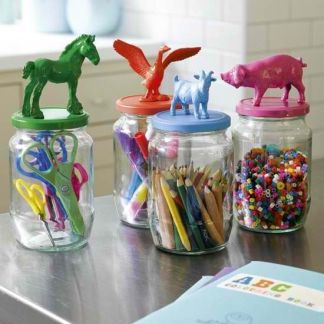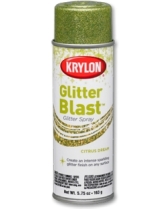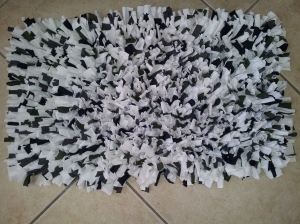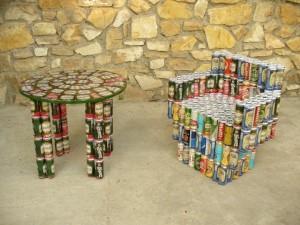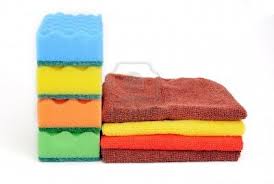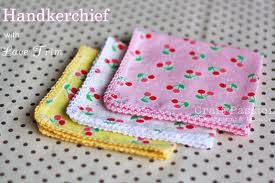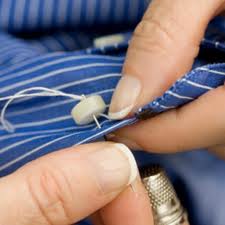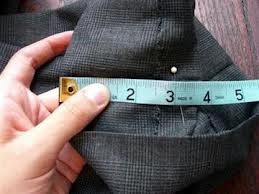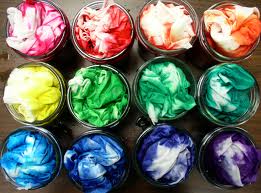1. Use what you have. SeeCraftyourstash.wordpress.com for my on-going use-what-you -have project. Craft lovers tend to collect bits and pieces of things using such great justification as: it’s on sale, I always am looking for this color, size, weight, etc. Because we are so well prepared we will probably never really need to buy another piece of fabric (paper, ribbon, fastener, board, insert your favorite craft/hobby here). To that end, save some money and use what you have. This will require a great deal of creativity; that is why you were doing hobbies in the first place. It will also require a great deal of will power. I won’t tell you I haven’t bought another piece of fabric since I started this project; I will tell you I’ve bought considerably fewer pieces and have had an enjoyable challenge using what I’ve got. I’m pretty sure that my friends and family have enjoyed the fruits of this labor as well.
-have project. Craft lovers tend to collect bits and pieces of things using such great justification as: it’s on sale, I always am looking for this color, size, weight, etc. Because we are so well prepared we will probably never really need to buy another piece of fabric (paper, ribbon, fastener, board, insert your favorite craft/hobby here). To that end, save some money and use what you have. This will require a great deal of creativity; that is why you were doing hobbies in the first place. It will also require a great deal of will power. I won’t tell you I haven’t bought another piece of fabric since I started this project; I will tell you I’ve bought considerably fewer pieces and have had an enjoyable challenge using what I’ve got. I’m pretty sure that my friends and family have enjoyed the fruits of this labor as well.
2. Use coupons and apps. There really is an app for that. Joann, Michaels and Hobby Lobby are in my neighborhood so I frequent them quite a bit. Find their apps for a 40% off regular priced goods. Sign up for emails at your favorite quilt shop. They will let you know when there is a sale. Many quilt and craft shops will offer discounts on materials for classes.
 3. Trade your services for store credit. If you have a particular talent for quilting, sewing or making things that will make a terrific store display, offer to trade hanging your quilt (or other project) in the store for a month or so in trade for store credit. This is especially helpful when you use materials from a line that is new and hot or languishing on the shelf. Manufacturers also hire crafters and/or provide materials for you to make samples.
3. Trade your services for store credit. If you have a particular talent for quilting, sewing or making things that will make a terrific store display, offer to trade hanging your quilt (or other project) in the store for a month or so in trade for store credit. This is especially helpful when you use materials from a line that is new and hot or languishing on the shelf. Manufacturers also hire crafters and/or provide materials for you to make samples.
4. Shop around: White thread, 500m, polyester $5.95 in the store, $.89 on line. (threadart.com) Shopping online requires a little planning (don’t wait until you’re out of white thread before you start your research), and will cut down on impulse buying. You will probably have to pay extra for shipping so this may be the time to stock up a bit (don’t go crazy.)
5. Swap with your friends. You have plenty of shiny machine embroidery thread, but you need cotton quilting thread. Perhaps you can trade with a friend. These kinds of swaps work great when you’re in a class. Ask around.
6. Ask for it. Most people have tons of extra if they are crafters and would be happy to make some space on their shelves. Refer to item number 1. Just ask. Think of it like the kids card game, Go Fish. Perhaps the answer will be no, perhaps yes.
7. Look around your house. There are other craft materials hiding in unsuspecting places. Just have a gander at Pinterest if you’re not sure where to start. Cans and Jars, boxes, pallets and other assorted items that you might have confused as trash can be made into some cool projects. Sheets, towels, tablecloths, and old clothes from the back of the closet can also be used for sewing projects. See this page for some amazing work with reused leather.
8. Thrift stores have fabric. Usually fabric is hung with the towels and linens. Yard sales, rummages sales and estate sales are also good sources for inexpensive fabrics and supplies. Also check Ebay and Etsy for fabric or craft listings.
9. Don’t buy it for a future project. Buy it for what you want to make right now. Don’t stack up projects for the future. You will end up with a closet full. Refer again, to number 1.
10. Buy what you absolutely love. Not because it’s on sale, discounted, practically free.
11. Buy only the quantity you need.






